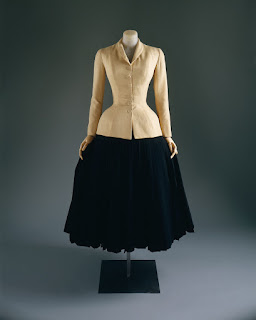I've Always Wanted to be Like Indiana Jones
Welcome back to another weekly addition of Historical Fact and Fiction. This week, we'll do something a bit different as I wanted to talk about my experience working in museums and how much I really enjoyed it!
I grew up in the shadow of the Royal Ontario Museum (ROM). It was a quick and easy train ride into Toronto and could easily be done in a day. This meant that I had plenty of opportunities to visit and explore the vast collections offered there. Since it is the biggest museum in Canada, my perceptions were skewed. Combine that with my love for Indiana Jones and anything from Dan Brown and I was ready to discover groundbreaking historical secrets trapped in seemingly ordinary artifacts.
So when I finally got to work in a local museum’s
archives, I was very excited. All my childhood dreams had come true and I could
wander the stacks and find any number of hidden objects. Now, I didn’t find the
Arc of the Covenant or some hidden secret about Christianity because those only
exist in fiction. What I did find, was a vast collection of textiles. This was
at a small museum in a small town whose collection was massive for where they
are. The textile collection ranges from the 17th-20th
century and mainly featured women’s clothing which was fine by me. I had always
been interested in the corsets and the big hoop skirts—so much unlike my own
style of dress.
Part of my role was to create an online
exhibit on pretty much anything I wanted, as long as it could be traced to a
specific location in the town. The choice seemed obvious to me so I took a deep
dive into the textile collection. I focused mostly on dresses from the 18th
and 19th centuries. As an extension of this project, I also photographed,
located and documented some of the dresses that had been lost in the archives.
This was by far my favorite part.
To get the full effect of the dress, we had
to put it on a mannequin and then the proper undergarments so that we could see
the full skirt. This process posed many difficulties. Women of that era are very small. Regular mannequins don’t
lend themselves well to fitting these petite frames. On more than one occasion, I spent an hour or so molding a vaguely feminine shape out of a large cardboard
tube and cotton filling (a task University did not prepare me for). Often these
women would be cinched in with the corsets, but even the shoulders were very
narrow. As someone who is 5”10, I towered over these mannequins (with
adjustable heights) since the dress was made for a woman around 5 feet.
Another major concern is just manipulating
the fabric around a mannequin. Silk of that era was made with bits of metal so
over the years, the silk shreds itself. Even if you never looked at it again,
the sheer weight of the silk would shred itself. Thus, if you did take it out
and put it on a mannequin, you risked losing chunks of the fabric, or further
shredding the material. In some cases,
this was worth the risk since these fragile dresses were often among the ones
least photographed and catalogued if at all.
Everything I found was just so cool. The dresses and other textiles had
been boxed up ages ago with labels that were no longer accurate so opening a
new box was like Christmas morning every day. A few of them were sadly in poor
condition, but most were stunning. It’s such a unique experience to see them up
close and personal. You can see the painstaking stitches along the hem. Or the
intricately hand-beaded patterns. Or as one dress had, repurposed lace clearly
not from the era. This posed a little mystery but we suspected it has been used
by a theatre troupe and had been adjusted several times for the actresses and
reinforced.

This is such a cool blog post. I too love textiles and clothing history! It must have been such a unique experience to actually handle and work with the clothes - I am jealous!
ReplyDeleteThis sounds like so much fun! I don't know anything about textile history, and it sounds fascinating. I truly wonder why the women were so small, though.
ReplyDelete